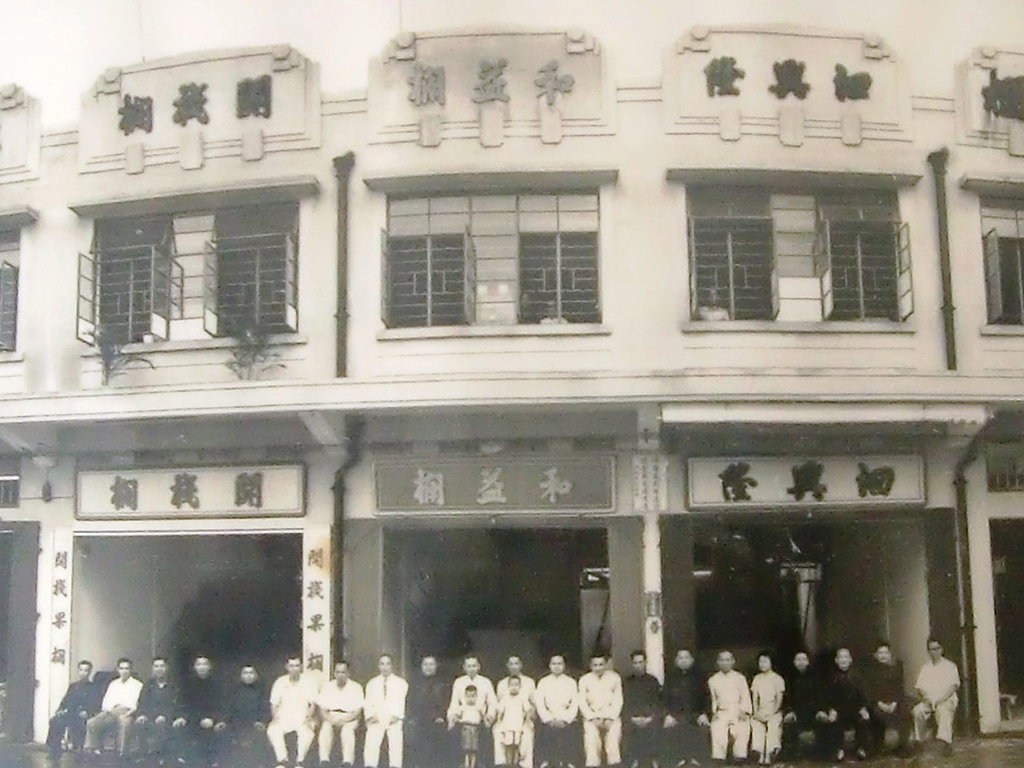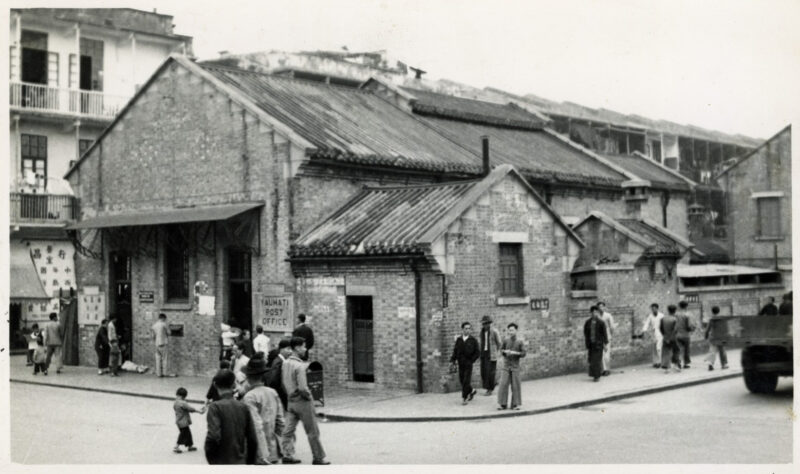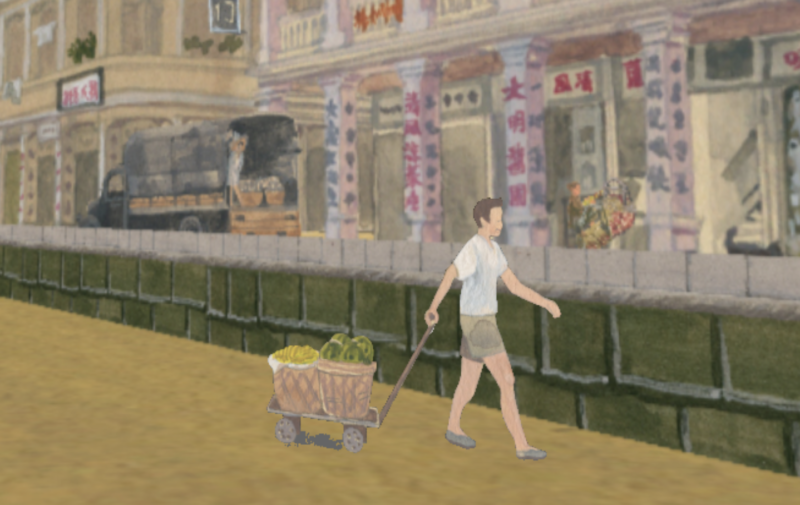Yau Ma Tei – Fruit Market ca. 1947

360-degree panoramic artwork created by Wai Wai
Historical Hotspots:
Yau Ma Tei Wholesale Fruit Market

The name of Fruit Market was originally “Government Vegetables Market” and it was founded in 1913. The stalls were initially constructed by thatched shacks but then built with bricks and concrete after the government had approved the use of the land for the market from the 1920s to 1930s. Founded in the 1950s, Ng Fung Hong not only diversified the choices of fruits imported from the Mainland China in the market, but also imposed the standard regulations on transportation and pricing of fresh food. As vegetable and seafood stalls were relocated to other markets, this market was officially renamed as “Yau Ma Tei Wholesale Fruit Market”. The number of fruit stalls rose from around 40 to approximately 300 at its peak period.
The stalls in the Fruit Market (Gwo Laan) are called “Laan Po”, while stall owners are called “Laan Sheung” in Chinese. During the early days, most stall owners were originally Mainland Chinese immigrants from Dongguan in the Guangdong province. These stall owners then brought over their family members and relatives to Hong Kong for work, and they once made up 80% of the stall business owners. Hence, the streets nearby are also named “Tung Kun Street” (Pronunciation in Cantonese) and “Shek Lung Street”, which are derived from Shilong Town in Dongguan. Stall owners, vendors, and traders used to negotiate prices with the Chinese abacus and industry jargon for businesses in the past, but nowadays, these tools have been substituted by calculators and computers.
Photo courtesy of Kowloon Fruit & Vegetable Merchants Association Ltd.
Yau Ma Tei Red Brick Building

Built in 1895 as the Engineer’s Office of the former Water Pumping Station on Shanghai Street, it is one of the oldest surviving waterworks buildings in Kowloon. It served 35,000 residents in Kowloon by supplying water. Designed with the influence of colonial neoclassicism and integrated with the “Arts and Crafts movement” style, the building was strongly featured with craftsmanship. After the pumping station had ceased its operations in 1911, it was divided and converted to different uses, such as the Yau Ma Tei Post Office and a homeless shelter; reconstructed as public bathrooms and a refuse collection. In 2009, the Red Brick Building was revitalized together with its adjacent Yau Ma Tei Theatre as a performance venue for traditional Cantonese operas.
The Red Brick Buildings was converted into Yau Ma Tei Post Office in 1915 and it was closed in 1967. Plenty of letter writing stalls were established at the adjacent Yunnan Lane. Letter writers were required to be proficient in writing with clear handwriting. Their income could even be higher than that of a corporate business manager in the 1960s. Therefore, well-educated people, such as retired senior officials and government officers were tempted to work as letter writers for a living.
Photo courtesy of Public Records Office, Government Records Service.
Yau Ma Tei Theatre

The waterfront area at Yau Ma Tei was a location for the discharge of imported goods from the Mainland China in the early days. It was packed with workers that stimulated the surrounding entertainment venues, including the Yau Ma Tei Theatre. Built in 1930, it is also one of the remaining pre-war cinemas in Hong Kong. To cater to the audience in the grassroots class, the theatre appeared to be ungentrified without any grandiose setting. Despite its flourishing business at first, it could not face up to vigorous competition with the new mini cinema complexes in the 1980s. It could barely survive even by promoting a full-day film pass as a marketing strategy, and was eventually closed in 1998. Subsequently, the government revitalized the theatre with the adjacent Red Brick Building into a performance venue for traditional Cantonese operas. Yau Ma Tei Theatre was later reopened in 2012.
After World War II, Yau Ma Tei Theatre specialized in screening local Hong Kong movies. As the production of Cantonese movies stagnated in the early 1970s, the classic movies “The Big Boss” and “Fist of Fury”, led by the revered Hong Kong martial arts actor, Bruce Lee, were merely released in Mandarin. The Cantonese dubbed version was only made available upon redistribution. Afterwards, Yau Ma Tei Theatre, which screened Hong Kong movies, cooperated with Golden Harvest as part of its cinema chain and played Bruce Lee’s movies to attract audiences.
Recent photo.
Photo courtesy of City University of Hong Kong.
Photograph by Wu Jiaru.
Animation:
Nowadays, the workers at Fruit Market begin operating the market at midnight. Yet in the early days, Fruit Market workers started transporting vegetable and fruit products at 7 in the morning. As the business was extremely busy every day, the workers could only enjoy 2 days of holiday every year before the labour law was enacted. To relax during the working days, they liked to have a nap in the adjacent Kam Wah Theatre and Yau Ma Tei Theatre, which both were air-conditioned.
